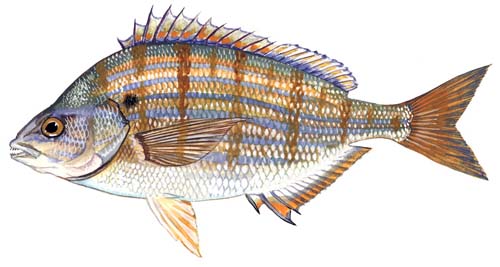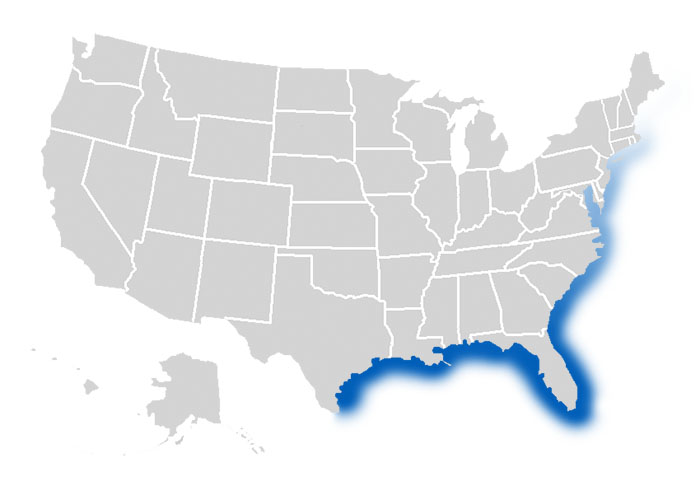The eastern seaboard of the U.S. is home to the pinfish, which can also be found in the Gulf of Mexico Bermuda, and the Caribbean. This small fish is most often caught by bait casting or surf casting with a net.

Habitat: Ocean, Coastal Waters
How to identify Pinfish
Pinfish grow to about 4 ½ inches long, making them one of the smaller fish. They have a silvery-white body that is covered with dark, vertical bars. Their backs are a dark green color. Pinfish have 12 spines in their dorsal fin, which are hard enough to prick a hand – this is how they got their name. These spines can make them difficult to handle when caught.
Where to catch Pinfish
These fish are found off the eastern seaboard of the U.S. They’ve also been seen in Bermuda, the Gulf of Mexico, northern Yucatan, and parts of the northern islands in the Caribbean. They are sparsely found in tropical conditions within their range. Pinfish like waters with grassy bottoms that are located near some type of structure, such as rocks, shipwrecks, mangroves, or channel markers.

The following are habitats where you can catch Pinfish:
- Coastal Waters
- Jetties and Breakers
- Mangroves
- Piers, Docks and Pilings
- Rocky Sea Floor
- Saltwater Weed Beds
How to catch Pinfish
Pinfish are drawn in by chumming with chum bags. Anglers have had success catching them by casting out nets in grassy shallows or jigging with a Sabiki rig in chummed waters. Traditional hook and line baited with shrimp is also effective, as is using a trap. Pinfish don’t like cold waters and are most active during the day. Morning is an especially good time to catch them. They tend to stick to areas that are 30-50 feet deep.
The following are effective fishing methods and techniques for catching Pinfish:
Best Lures, Bait & Tackle to catch Pinfish
Pinfish can be hard to catch with a hook. This is why most anglers advise using a net to catch them after baiting them with chum.
The following are fishing lures, bait and tackle that can be used to catch Pinfish:



